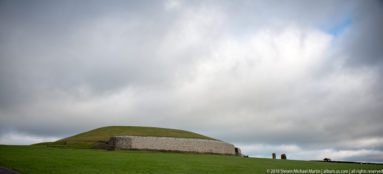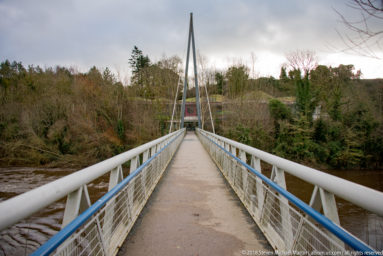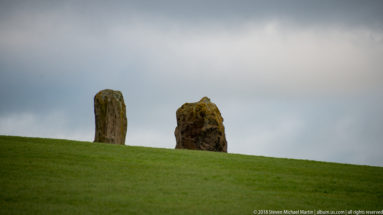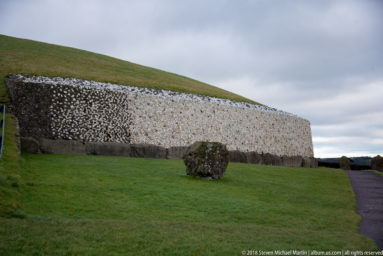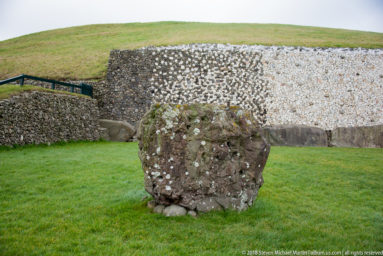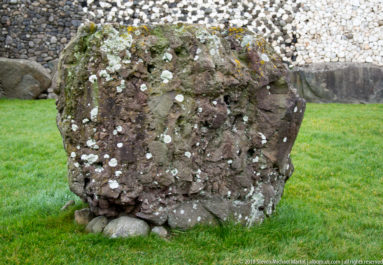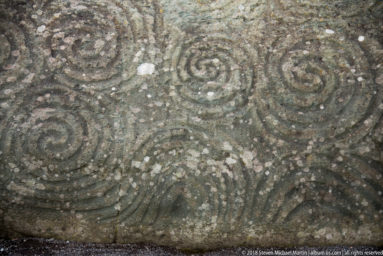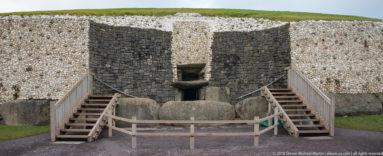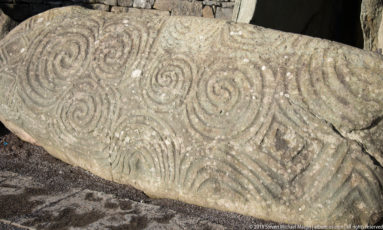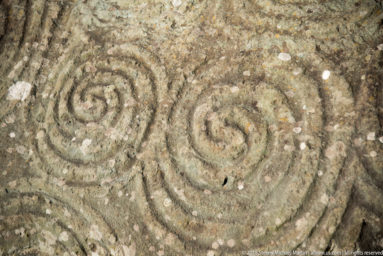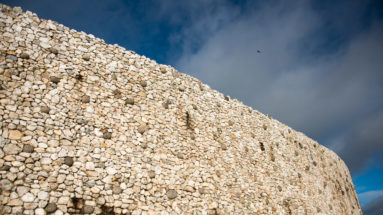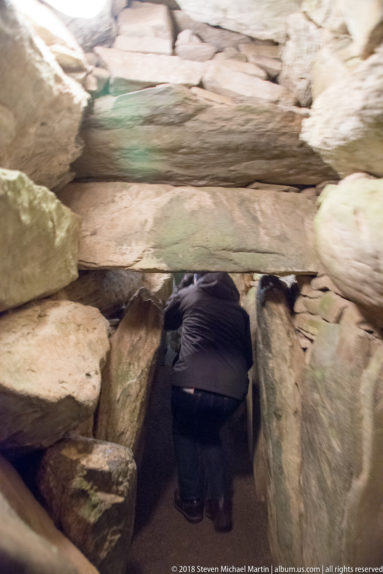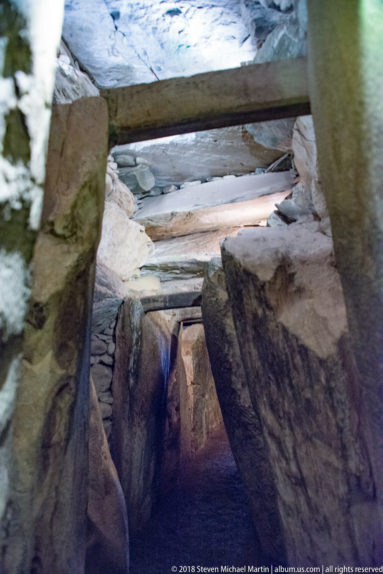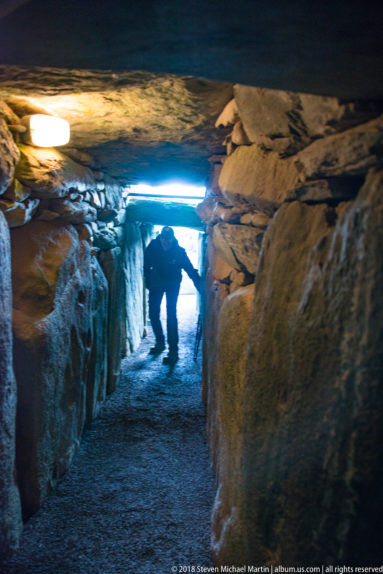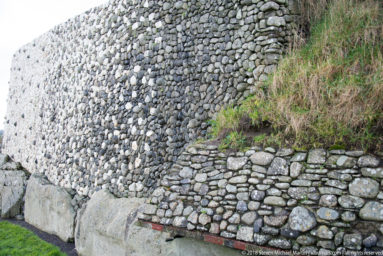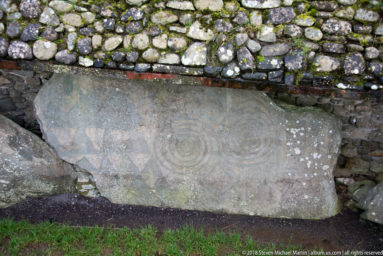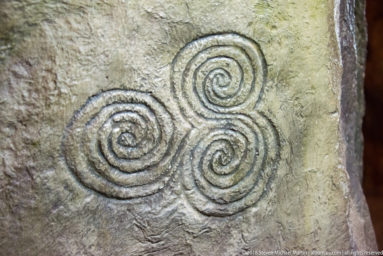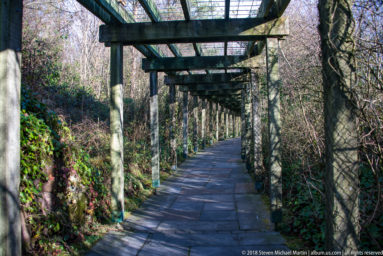Stop #12:
Brú na Bóinne means Palace of the Boyne or Mansion of the Boyne. It contains one of the world’s most important prehistoric landscapes dating from the Neolithic period, including the large Megalithic passage graves of Knowth, Newgrange and Dowth as well as some 90 additional monuments (the photos are of Newgrange). The archaeological culture associated with these sites is called the “Boyne culture”. UNESCO designated the site in 1993.
Humans settled the area at least 6,000 years ago, but the major structures date to around 5,000 years ago.
We saw Neolithic mounds, chamber tombs, standing stones, henges and other prehistoric enclosures, some said to date from as early as the 32nd century BC. The site predates the Egyptian pyramids and was built with sophistication and a knowledge of science and astronomy. Each year, during winter solstice for about 20 minutes, a beam of light shines directly through an opening in the front entry of Newgrange and travels all the way through a narrow opening that leads to the far side of the chamber.
See also Carrowmore Megalithic Cemetery.

National Library of Ireland on The Commons – Newgrange (photo from the early 1900s before the site was cleared)

